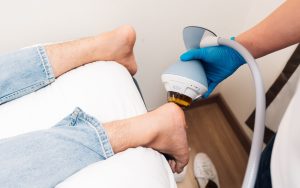Sedation dentistry has become a significant aspect of the dental health department. With these efficient and conscious sedatives, dentists can perform procedures efficiently and reduce patients’ anxiety. These sedatives also eliminate painful experiences for patients, motivating them to show up at their dental appointments rather than calling at the last minute. Nevertheless, different types of sedatives are used in dentistry depending on your needs and health conditions.
To ensure that you have a smooth and painless experience, the dentist will give you a sedative that suits you the best. However, if you have any queries about your dental conditions, you can visit the Winnipeg sedation dentistry today!
Types of drugs used in sedation dentistry
- Midazolam
The most common drug used in dental sedation is midazolam. The primary function of this drug is to reduce the patient’s anxiety and cause memory loss for a short period until its effect lasts. This drug immediately affects your heart and lungs and is injected into the patient’s vein.
Midazolam takes approximately 2-3 minutes to show its effect, and once the patient starts feeling the result, they become unconscious for the entire dental procedure. This drug is helpful for patients with extreme anxiety about surgery and hyper-reactive toward these treatments.
It becomes easy for a dentist to do their job as soon as possible and ensure that the procedure is performed correctly. Additionally, the sedative effect of midazolam lasts from 60 to 120 minutes max.
- Propofol
Propofol is a sedation dentistry drug that is also given to the patient by injecting it into the veins. According to the JDPM review, this drug consists of glycerol, soybean oil, and egg lecithin.
Hence you might experience some pain during its ingestion unless it is mixed with another anesthetic compound that eliminates the pain. But do not worry, as the pain will not last long, more than a couple of seconds, and soon all your pain receptors will go numb.
Propofol has a faster reaction rate than others, around 90 to 100 seconds. However, it is also created quickly from your body after ingestion, so your dentist might inject it a few more times if the dental procedure lasts long.
This is nothing to worry about since you are in professional hands, and the dentist will not give you any more than you can take. Once the dental procedure is over, the recovery rate for propofol is quick.






More Stories
Shockwave for ED vs. Traditional treatments – A comprehensive comparison
Effective Ways to Manage Spinal Curvature in Adolescents
Enhance Your Culinary Experience: Pairing Cannabis Strains with Local Flavors